CCCA | Mondaq
2024 Canadian In-House Counsel Report
Unparalleled Insights into Canada's In-House Profession
Sponsored by


INTRODUCTION
The Canadian Corporate Counsel Association (CCCA) and Mondaq are delighted to present the results of our third annual Canadian In-House Counsel Survey. Based on 600 responses, from across the country and across all job levels, this report provides Canadian in-house counsel and the legal profession with unrivalled insight into the key questions and issues that are impacting individual counsel and legal departments today. Designed in partnership with an advisory board composed of eminent in-house counsel, this report provides an up-to-date analysis of the hot button issues and 2024 outlook for the Canadian in-house profession.
We’d like to thank the Canadian in-house community for their terrific support of our survey, which has established itself as the definitive annual report into the Canadian-in house profession, as well as our advisory board members for their sage counsel. Thank you also to our report sponsor, Lawyers Financial, for enabling us to further amplify the survey findings and analysis.
About the CCCA
The CCCA is the leader and voice for Canadian in-house counsel. Founded in 1988 as a forum of the Canadian Bar Association, we represent over 5,000 in-house counsel from every province and territory, and sector and industry, making us the most inclusive and representative professional association for in-house counsel in Canada. Our members are lawyers working for public and private companies, not-for-profits, associations, government and regulatory boards, Crown corporations, municipalities, hospitals, postsecondary institutions and school boards.
About Mondaq
Mondaq is a leading global provider of AI-enabled content marketing, analytics and data solutions for professional services firms and helps its over 20 million readers worldwide to find answers to legal, tax and compliance questions. Mondaq has over 2 million readers in Canada, including the majority of Canadian in-house counsel and executives from thousands of Canadian organisations.
It’s our hope that you will find this report useful in helping you to make informed decisions about your individual and your department’s priorities, now and in the future.
Tim Harty
Chief Executive Officer
Mondaq
Alexandra Chyczij
Executive Director
Canadian Corporate Counsel Association

METHODOLOGY
Advisory Board
In October 2023, the CCCA and Mondaq jointly launched the third annual Canadian In-House Counsel Survey with the aim of providing unrivalled insights into the in-house counsel profession in Canada. This survey stands out as the most comprehensive and representative examination of the state of in-house legal departments in the country.
600 respondents completed an online survey between October and November 2023. The survey included 38 questions covering organization and legal department activity, budgets and investment, outsourcing, technology, innovation, as well as priorities, challenges and other people-focused questions. Following the main questionnaire, a voluntary self-identification section consisting of 8 questions was included, and it garnered responses from over two-thirds of the participants.
To ensure rigorous oversight and authoritative input, the survey was developed in partnership with our survey Advisory Board, which includes eminent Canadian in-house counsel.
Steve Smyth
Vice President, Corporate Development and General Counsel
Trotter & Morton
Margot Spence
Executive Director, Legal
Destination Canada
Heidi Schedler
President
CCCA
PARTICIPANT PROFILE
The survey successfully obtained a representative view, with notable characteristics in participant roles and organizational affiliations:
- 30% of participants, a significant increase from the previous year, represented the top tier (CLOs/GCs).
- Diverse representation across legal departments included responses from Associate GCs (7%), Senior Counsel (19%), Counsel (33%) and Directors of Legal Services/Legal Managers (8%).
- Excellent response levels from across various sectors, with 26% from public companies, 29% from private companies, 31% from government organizations and 8% from not-for-profits.
- Balanced distribution based on organizational size, with 37% of responses from organizations with up to 500 employees, 32% with 501 to 5000 employees, and 30% with 5001+ staff.
For further details on survey respondent specifics, refer to the Participant Profile charts to the right.
Location
Job Role

Organization Type
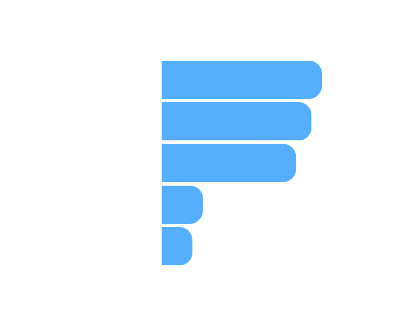
Organization Size by Employees

EXECUTIVE SUMMARY
Against the backdrop of global geopolitical upheaval and continued economic uncertainty abroad and at home, the CCCA & Mondaq Canadian In-House Counsel Survey seeks to shine a light on the state of Canada’s in-house legal departments and profession. The extensive questionnaire and widespread survey participation, provides unrivalled insight into legal departments’ budgets, investment, staffing, activities, insourcing and sourcing focus; reveals the biggest challenges and priorities across all in-house job levels; and provides insights into what makes a great in-house lawyer in 2024.
of legal departments work on a hybrid basis
Effective communication remains the
number one skill required by in-house counsel
While there are areas of similarity from previous years, there are some significant changes in 2024, as well as pertinent issues, which are not yet being effectively addressed by the leaders of organizations and their legal departments.
of respondents experiencing an increase in anxiety and stress in the last year
Hybrid working is here to stay, but with more mandated office days -
82% of legal departments work on a hybrid basis and one in five of these do not mandate staff to spend any time in the office. However, there is a marked shift towards in-house counsel being expected to be in the office for two or three days a week, with the number rising to 64% in 2023.
Continued growth in demand for in-house legal services -
organizations continue to look to their legal departments to manage growing regulatory and compliance risk and increasingly to act as business partners to help drive revenue growth. The areas seeing the biggest growth in in-house demand are data privacy (+57%), compliance (+52%), contract management (+43%) and providing business strategy and advice (+33%).
Continued focus on meeting the increased demand for legal services via insourcing -
while demand for in-house services continues to substantially increase, it appears that much of this demand will be met internally through additional investment in technology and people, with comparatively much less growth in spend on external counsel and alternative legal solution provider spend in 2024.
Buy-side value drivers for procuring outside legal services -
the top four buy-side considerations are outside counsel’s legal expertise, practical advice, client service and their understanding of their client’s business, which is an increasingly important driver of buying decisions.
In-house personnel are carrying significant accountability beyond their legal responsibilities -
including compliance, ethics, investigations, government affairs and more. The number of in-house departments responsible for ESG continues to increase, with a 75% increase since 2022, and significantly more CLOs/GCs are quoting ESG as their biggest legal challenge this year.
Work-related stress and anxiety is still on the rise -
the profession continues to see high levels of work-related stress and anxiety levels, with 50% of respondents experiencing an increase in anxiety and stress in the last year and just 10% a decrease. Moreover, the number of Legal Counsel and Senior Counsel quoting workload as their biggest challenge has substantially increased, raising the prospect of widespread staff burn-out and wellbeing issues.
Continued lack of focus on Equality, Diversity & Inclusion in legal departments -
39% of legal departments (up from 35% last year) do not deem ED&I a priority and, while there are differences in responses based on the organization type, size and location, there remains a significant opportunity for legal departments to further prioritize and deliver ED&I initiatives.
Top in-house priorities and biggest challenges -
while managing regulatory risk and compliance remains a high priority, in-house counsel priorities and challenges are now being significantly impacted by technology and artificial intelligence (AI). It is apparent that recent developments in legal technology and generative AI are having a significant impact on legal departments and that in-house lawyers require support in this area.
What makes a great in-house lawyer in 2024? -
in-house lawyers require so much more than legal skills, with the three most important skills required for an effective in-house lawyer today highlighted as communication, followed by understanding the business and flexibility/adaptability. Effective communication remains the number one skill required by in-house counsel, which is indicative of an ever more complex and demanding work environment.

This year’s joint beneficiary of additional spend is legal department technology (people featured highest in 2023), with 45% of respondents expecting to spend more (versus just 3% spending less). This number is highest in private companies (47%), followed by public companies with 46% expecting to invest more on legal department technology (although this is down from last survey’s 54%) and 45% of government organizations. “Technology” and “AI” feature for the first time in our survey as biggest challenges to counsel and senior counsel, so legal department leaders should ensure that increased investment in technology is matched with the support required to help legal teams manage technology advances and change.
The other joint biggest budget beneficiary of additional investment is people, also with 45% of legal departments expecting to spend more on people (compared to 47% in the previous year) and just 5% expecting to spend less. A big driver of the increased spend is additional hiring (26% of legal departments anticipate headcount growth). However, growth in hiring appears to be decelerating as over 30% of departments planned to grow headcount in 2022 and 2023. Growth in people spend this year is highest in government legal departments, with 54% expecting to spend more, while growth on people spend is expected by 37% of public companies and 44% of private companies. With the continued expansion of in-house teams, the battle for legal talent within the Canadian market is set to continue.
In line with 2023, spend on outside counsel appears to be challenged in 2024. While 35% intend to spend more on outside counsel, 17% are expecting a reduction in spend. Public companies spend on outside counsel is markedly more challenged than private companies, with 38% of public companies expecting to spend more and 20% less on outside counsel. In contrast, private companies are likely to see more investment in outside counsel, with 40% expecting to increase spend on outside counsel and just 9% decrease. The spread between legal departments expecting to spend more and those expecting to spend less on outside counsel continues to be much narrower, at 18 percentage points, compared to the near 40 percentage point spreads on departments expecting to spend more versus less on technology and people.
There does not appear, however, to be a shift of expenditure from outside counsel to alternative legal services providers (ALSPs), with only 13% of respondents making use of ALSPs (down from 14% in line with 2023) and the impact of ALSP spend on overall budgets is minimal, with 13% of respondents seeing more ALSP spend compared to 10% less. 17% of public companies use ALSPs, more than double other organization types and 16% are expecting to see their spend on ALSPs grow, compared to 11% seeing a decline.
So, while demand for in-house services continues to increase, it appears that much of this demand will be met internally through additional investment in technology and people, with significantly less growth in spend on external counsel spend in the coming year.
This year's joint biggest beneficiaries of additional spend are legal department technology and people
BUDGETS & INVESTMENT PRIORITIES
While five in ten legal departments are expecting their budgets to stay flat in 2024, 38% expect in-house budgets to grow (down from 40% in 2023 but still well up on 33% in 2022) and 12% expect a decline in budgets in 2024 (up marginally from 11% in 2023). Budget growth is expected across all types of organizations; however, it appears that growth in public companies’ legal department spend is slowing, with 30% expecting growth (compared to 42% in 2023) and 16% expecting a decline in budgets (compared to 20% in 2023). Private companies are anticipating robust budget growth (45% expect growth and just 6% contraction), government organizations (43% expect growth and 15% contraction) and not-for-profits (29% expect growth and 6% contraction).
Expected size of the total in-house legal department budget over the next year:
Increased responsibilities and demands on in-house counsel, which continue to grow year-on-year appear to be a contributor towards budget growth. The top six areas of increased in-house demand are around data privacy (57% expect increase in activity, up on 50% in 2022), risk and compliance (52% expect increase up on 50% in 2022), contract management (43% expect increase), dispute resolution and litigation (32% expect increase), providing business strategy and advice (33% expect increase) and supporting operational delivery (31% expect increase). Organisations continue to look to their legal departments to manage regulatory risk and compliance and increasingly to act as a business partner to help them drive growth.
Expected Increase in In-House Demand:

OUTSOURCING
Outside Counsel
As seen in the 2023 report, there continues to be a very narrow range between those organizations expecting to outsource more work to outside counsel, versus those expecting to outsource less. 23% of legal departments are expecting to outsource more work to outside counsel in the next 12 months (compared to 22% in 2022 and 30% in 2021) and 20% expect to outsource less work (compared to 22% in 2022 and 19% in 2021). Like last year, this is most pronounced in public companies, with just 18% expecting to send more work to outside counsel and 26% expecting to send less.
When choosing to instruct outside counsel, the top four buy-side considerations are legal expertise (99% consider important or very important), practical advice (97%), client service (94%) and understanding the client’s business (94%). While the top four considerations rated as ‘important’ or ‘very important’ ranked the same as in the prior year, a key learning from this year’s survey is that outside counsel’s understanding of their clients’ business is increasing in importance and has displaced client service as third-ranked ‘very important’ factor at 67% (up from 59% in 2022), after legal expertise at 85% and practical advice at 75%. The data suggests outside counsel will be required to continue to provide top notch technical advice, maintain levels of client service and value for money, while getting to know their clients’ organizations better. 24% of legal departments are also seeking external expertise on industry perspective and intelligence, another way in which outside counsel can bolster their offering.
Outside counsel will be required to continue to provide top notch technical advice, maintain levels of client service and value for money, while getting to know their clients’ organizations better
The importance of outside counsel diversity and inclusion in buying decisions has dropped from 30% in 2022 to 26% in 2023. The importance of law firm investment in technology and innovation when making outside counsel buying decisions has also dropped by 400 basis points to 20% in 2023. Additionally, just 16% of legal departments deem existing senior-level outside counsel relationships very important, and even fewer, at 11%, deem outside counsel brand and reputation as very important. The relatively low level of importance placed on existing relationships and the perceived brand and reputation of the law firm should be a signal to incumbent firms and fee earners to ensure the higher scoring buy-side value drivers are also addressed.
Work areas most often outsourced:
71%
Seeking expert advice in
a new area
64%
Transactions and activities where legal departments
want external counsel assurance and opinions
58%
Transactional activities where legal departments don’t have internal capacity
The three types of work that are most often outsourced to outside counsel are centred around areas where existing in-house capabilities don’t exist or need to be supplemented: seeking expert advice in a new area (71% likely to outsource); transactions and activities where legal departments want external counsel assurance and opinions (64%) and transactional activities where legal departments don’t have internal capacity (58%). These results are similar across organisation types and in line with those of previous survey results.
Key considerations with significant increase in Very Important rating:
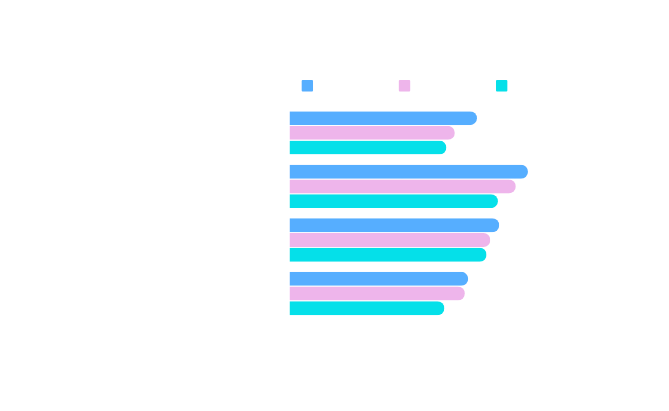

OUTSOURCING CONTINUED
How important are the following factors when selecting outside counsel?
Other Outsourcing
Law firms continue to dominate the market for outsourced legal services. Just 13% of in-house teams use Alternative Legal Service Providers (ALSPs), this is highest but declining in public companies at 17% (versus 21% in 2022) and lowest in government organisations at 8% (down from 9% in 2022). Rather than seeing growth in the uptake of ALSPs by in-house departments, each year has seen a small decline, from 14% in 2021 to 12.5% in 2023, a decrease of 11% since 2021. Spend on ALSPs is expected to see marginally more growth in the next 12 months than the prior year, with 13% of respondents spending more on ALSP services compared to 10% less.
The outsourcing of non-legal advisory work has remained roughly flat on the previous year. E-discovery is outsourced by 12% of in-house legal departments (equal to last year). Translation services are also used by 11% of in-house teams (down from 12% last year), which increases to 17% of public companies, where there is more demand.
Percentage of legal departments using:
13%
ALSPs
12%
E-discovery
11%
Translation services
When outsourcing:
96%
Outsource within
Canada
32%
Outsource outside of
Canada

INNOVATION & TECHNOLOGY
Innovation
Innovation in legal and risk management is a priority for 54% of legal departments. While some in-house counsel are blunt about the lack of innovation (“We don’t innovate ☹” GC, Private Company, Real Estate & Construction), the majority of respondents take innovation seriously. Legal and risk management innovation is highest in public companies, where 6 in 10 legal departments are innovating as a priority, followed by private companies at 52% and government organizations at 51%.
After barely a mention in 2021 and 2022, the most common area of legal department innovation is artificial intelligence (AI), with ‘Gen AI’ and ‘Chat GPT’ also getting several specific mentions. Document management and contract management, the two most popular areas of innovation in previous years, are the next most popular areas of legal department innovation in the most recent survey. Privacy is the only named legal/compliance topic that is raised as a key area of innovation. In 2023, legal department innovation was unsurprisingly fuelled by developments in generative AI as well as continued digital transformation (“Being primarily paperless” Senior Counsel, Public Company, Financial Services).
The most common area of legal department innovation is AI
The single biggest area of innovation in the legal department is:

Technology
There is a small decrease in the number of legal departments treating investment in legal department technology as a priority. 43% (versus 45% in previous survey) of organizations are prioritizing investment in legal department technology. This is still well up on the 39% reporting technology spend as a priority in 2021. Prioritization is highest in private companies at 46% (a jump on last survey’s 41%), followed by government organizations at 44% and public companies at 43% (a sizeable fall on prior survey’s 55%). These shifts in technology prioritization across public and private companies are mirrored in the below technology spend plans. One hypothesis is that private companies are playing catch up on technology spend as public companies more quickly invested in digital transformation during the Covid-19 pandemic.
The prioritization of technology investment is visible in spending plans, with spend on legal technology accelerating in 2023: 45% of respondents (compared to 40% in the prior year) are expecting to spend more on technology in the coming year and just 2% to spend less. This number is highest in private companies with 47% (versus 38% in prior survey) expecting to invest more, followed by public companies with 46% (versus 54% previously) and lowest in government organizations, although 45% are nevertheless expecting to spend more on technology.
The biggest technology spending shift in organizations is spending on e-discovery technology
Consistent with last year, the areas with the most growth in technology investment are data privacy and security management (moves to #1 from #2), document management (moves to #2 from #1) and contract lifecycle management (#3 since 2021), with the vast majority of legal departments investing in these areas and most growth in investment expected from these areas. The number of organizations seeing growth in spending in e-signature technology, continues to decline, having been highest in 2021, at the height of the Covid-19 pandemic.
The biggest technology spending shift over the 3-years of the survey is the shift in organizations spending on e-discovery technology, with 46% more organizations investing in e-discovery technology than in 2021. There has also been a marked increase in the number of legal departments investing in workflow management since 2021 (up by 25%).
Number of organizations expecting to invest more in these technologies:
38%
Data privacy management
37%
Document
management
20%
Contract lifecycle management
19%
Workflow
management
Finally, the top three barriers to investment in legal department technology are the same as previous years, however data privacy as a challenge to tech adoptions has significantly increased. Cost continues to be the biggest barrier by far (77%) to the adoption of legal department technology, followed by lack of integration with other technology (50%) in the organization and implementation risk (39%). Data privacy concerns have leapt by a third from 25% citing as a barrier in 2022 up to 33% percent in 2023. It is evident that technology solution providers need to do more to address these issues.

PRIORITIES & CHALLENGES
Employee wellbeing and support does not feature as a top priority for in-house counsel leadership
Whereas the 2022/23 Canadian In-House Counsel survey indicated a big shift in priorities and challenges away from the Covid-19 pandemic towards a focus on supporting the business growth, strategy, cost management and risk management, the 2023/24 survey has some new standout priorities and challenges. There is a step change towards supporting growth rather than focusing on costs and potential recessionary pressures. Additionally, in-house counsel priorities and challenges are being significantly impacted by technology and AI – it’s apparent that recent developments in legal technology and generative AI are having a significant impact on legal departments and that in-house lawyers require support in this area.
Given the continued high levels of work-related anxiety and stress across all levels of in-house roles, much of it related to workload, it is again counter-intuitive that in 2024 employee wellbeing and support does not feature as a top priority for in-house counsel leadership. The responses would indicate that more work needs to be done to reduce in-house counsel burnout and to address employee wellbeing.
It’s apparent that recent developments in legal
technology and generative AI are having a significant impact on legal departments
Biggest Challenges
Looking at the biggest legal challenges expected to be faced across all job roles, the most common references pertain to volume of work and managing workload, risk and compliance - including privacy and cyber-security - and a major new challenge in the form of technology and AI, which is causing in-house lawyers concern. This includes the impact of the advances in generative AI and well as developments in the regulation of AI. Technology and AI did not feature at all as a challenge in the previous two Canadian in-house counsel surveys.
The concerns around increased workloads and managing the impact of technology and AI are most pronounced in Legal Counsel and Senior Counsel roles and it appears legal department leaders need to pay special attention to supporting their legal teams in these areas.
Cyber-security raised as a key challenge for the first time. CLOs/GCs also commonly mentioned ESG and AI as their biggest challenges
Top Priorities
Looking at the top priorities across all job roles, the most common references pertain to supporting business growth, risk management and compliance, technology and contract management. The key changes compared to the 2023 report are: a) supporting growth is more of a priority than before; b) technology features as a priority, whereas it was not highlighted as priority in either of the previous two surveys. Based on individual responses there are numerous mentions of legal technology projects and priorities.
CLOs/GCs more often call out supporting business growth and revenue, as well as employee related matters (such as staff retention and training), workflow, processes and risk and compliance as priorities (significantly less mention of cost management as a priority this year). Legal Counsel and Senior Counsel indicate technology, learning and development and compliance, including data privacy as key areas of priority. Technology and learning and development are mentioned far more frequently than in the prior year. Legal Directors/Managers have a greater focus on legal business operations, various contract projects and support projects as a top priority.

PRIORITIES & CHALLENGES CONTINUED
CLOs/GCs are again faced with challenges managing regulatory change and compliance, with data privacy commonly mentioned and cyber-security raised as a key challenge for the first time. CLOs/GCs also commonly mentioned ESG and AI as their biggest challenges, again the first time these two areas have been called out as frequently. There are also frequent challenges around budgets and costs.
CLOs/GCs: The greatest legal challenge I expect to face in 2024 is:
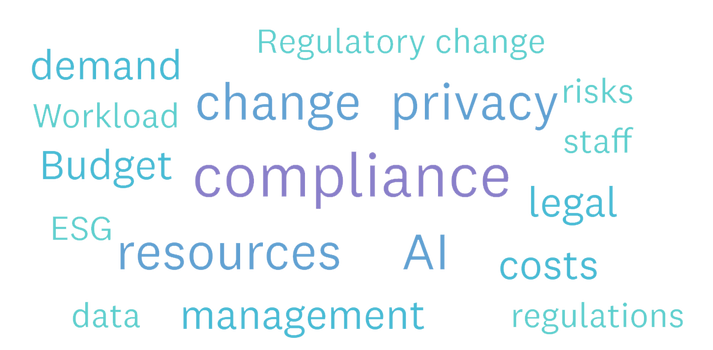
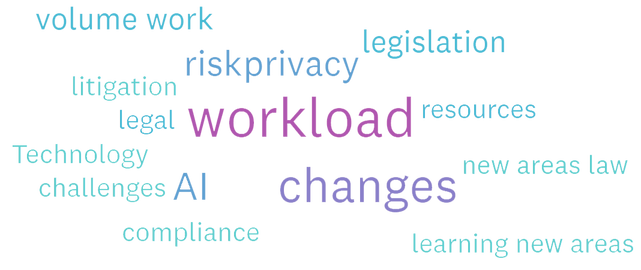
The greatest legal challenge the board of my organization expects to face in the coming year is:

The biggest legal challenge boards are expected to face are, like in the previous year, distributed across a number of different areas. The challenges can be grouped:
Firstly, into regulatory and compliance matters, again including data privacy and ESG, but with an additional commonly mentioned focus on cyber-security.
Secondly, boards are facing challenges on financial matters, although the focus has appeared to shift more to challenges around growth, rather than around the economy, recession and costs.
Thirdly, litigation matters remain a big legal challenge to the board. Unlike last year, acquisitions and employee retention are not mentioned as a big challenge for boards in 2024.
Unlike last year, acquisitions and employee retention are not mentioned as a big challenge for boards in 2024. Boards evidently have many legal challenges to contend with and the expectation is that the significance of legal departments and legal leadership to the business will continue to increase.

EQUALITY, DIVERSITY & INCLUSION
Respondents were asked whether Equality, Diversity and Inclusion (ED&I) is a priority in their own legal departments. Of the nearly 600 respondents, 39% stated that ED&I is not a priority in their legal departments. This is an increase on last year’s 35% and the highest number the Canadian In-house Counsel Survey has reported (higher than the 2021 survey’s 38%). The lack of priority on ED&I was reported more widely by more senior members of the legal department where 45% of CLOs and GCs in 2023 stated that ED&I is not a priority (compared to 37% in 2022 and 39% in 2021). This is concerning given that department leaders are most likely to have control and responsibility over the composition of the legal department.
Discrepancies in results were found based on location. For instance, more respondents in British Colombia (72%) felt that ED&I was a priority for their departments when compared to those in other provinces, for example, with Alberta at 67%, Ontario at 63% and Manitoba the lowest at 44%. Sentiment seems to be closely tied to the type and size of organisation and the size of legal department. The highest rate of negative response was in private companies, with 53% noting that ED&I was not a priority, compared to 37% in public companies, 33% in not-for-profits and 31% in government. Significant discrepancies can also be found when an analysis is done of the size of organization and the size of legal department. In organizations with over 5,000 employees, 70% of respondents deem ED&I to be a priority while in organizations with less than 500 employees, 55% deem ED&I important.
The biggest driver of priority appears to be the size of the legal department. Here, we found that the vast majority (78%) of legal departments with more than 30 staff stated that ED&I was a priority (although this number has declined from 87% in 2022), whereas only 62% of departments with 5 to 30 staff felt ED&I was a priority, with fewer still in departments with 2 to 4 employees. A better understanding is needed of the obstacles and barriers faced by small to mid-sized legal departments when it come to prioritising ED&I.
Race/ ethnicity of respondents:
Survey response diversity data based on voluntary self identification question:


In terms of diversity data, the survey’s voluntary self identification questions, which was completed by half of respondents, show that while the in-house community is gender diverse (61% Female and 38% Male) and age diverse (49% between the ages of 25 and 44; 30% between 45 and 54; and 22% 55 years and older), it is much less diverse from the perspective of race/ethnicity (79% Caucasian), with Black, Chinese and South Asian respondents each comprising 4% of the total.

PEOPLE & TALENT
Given the level of responsibility beyond the delivery of legal services, combined with an across the board increase in legal department activity, it is no surprise that stress and anxiety continue to run high in the in-house legal profession. 50% of respondents reported an increase in stress and anxiety while just 10% reported a decrease. This is on top of an already highly stressed employee base as 48% in 2022 and 71% in 2021 reporting increased levels of work-related stress and anxiety. In 2023 the increased level of work-related stress and anxiety is highest in CLOs/GCs at 54% (up from 49%) and Director of Legal Services/Legal Manager at 58%. The increase in anxiety levels by organization type is very similar across public and private companies, and government organizations and very similar across those that identify as female and male. However, those in large organizations (5000+ employees) report a higher increase than those in smaller companies (up to 500 employees). In the 2023 survey there are again numerous mentions of increasing workload and burnout in response to the biggest challenge faced by respondents). All types of organizations and their legal departments are clearly continuing to store up employee wellbeing issues and more action needs to be taken to assist employee wellbeing and mental health.
Given the high level of survey participation, we are able to examine a significant number of responses across all job levels, helping us to deliver a view from the top as well as from middle and junior-level in-house counsel roles.
The survey indicates that 82% of Canadian in-house legal departments are operating a hybrid location model (86% of public companies, 68% of private companies and 88% of government organizations), with 21% of those mandating no days at all in the office (down from 27% last year).
10% of law departments mandate one day a week in the office, 29% mandate two days and 35% mandate three days. One in twenty organizations mandates four or five days a week in the office. There is a marked shift towards those expected to be in the office for two or three days a week, with the number rising from 52% in 2022 to 64% this year. So, while hybrid is still far and away the most common staffing model, organizations are evidently expecting their employees to spend more time in the office than last year. The data also shows that large organizations (5000+ employees) are much less likely to mandate 3 or more office days than small to medium-sized organizations (up to 500 employees), with 31% of large versus 45% of small to medium-sized organizations mandating three or more office days. In terms of challenges created by hybrid working, employee engagement is rated the most difficult area, with 65% of respondents recognizing a degree of challenge.
In-house personnel accountability beyond legal:
47%
of in-house counsel are responsible for compliance
25%
are responsible for ethics
22%
are responsible for investigations
19%
are responsible for government relations (up from 17% in 2021)
14%
are responsible for ESG
(75% increase from 2021)
Remote/hybrid working arrangements::
82%
21%
Hybrid location model
Office attendance not mandatory
It is evident that in-house personnel are carrying significant accountability beyond their legal responsibilities, with over 47% of in-house counsel also responsible for compliance (up from 45% in 2022 and 43% in 2021), while one in four is responsible for ethics and 22% for investigations. 19% of in-house counsel are responsible for government relations. The number of in-house departments responsible for ESG continues to increase, rising from 8% in 2021 to 14% today (75% increase). In public companies, investor relations are also a frequent additional responsibility. Much of this additional accountability is centred on CLOs/GCs, with 61% responsible for compliance, 34% for ethics and 28% for investigations. One in five CLOs/GCs is also responsible for ESG and government relations. Senior counsel and legal counsel frequently pick up additional accountability too.
It is no surprise that stress and anxiety continue to run high in the in-house legal profession

Most common non-legal business roles into which in-house counsel move:
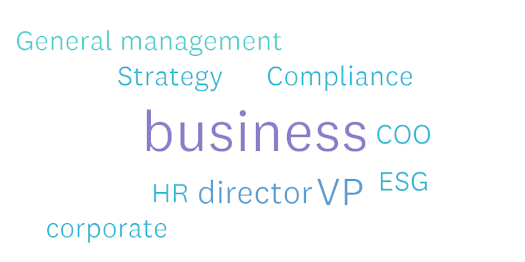
PEOPLE & TALENT CONTINUED
In-house lawyers require so much more than legal skills, with the most important three skills required for an effective in-house lawyer in 2024 being communication, followed by understanding the business and flexibility/adaptability. Effective communication remained the the number one skill required by in-house counsel, perhaps indicative of an ever more complex and demanding work environment.
Three skills required for effective in-house counsel in 2024:
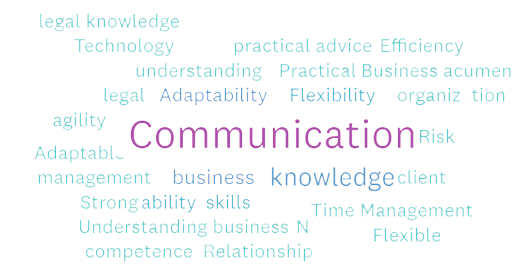
Reported increase in work-related stress and anxiety:
While the increase is lower than in 2021, it is important to note the increase is on an already highly stressed base
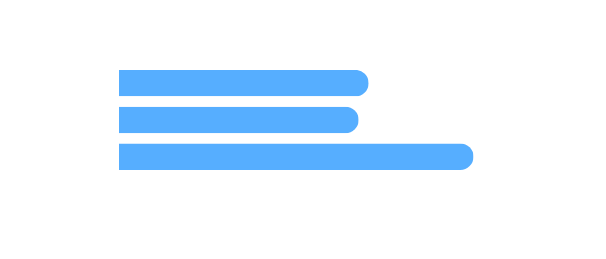
Stress and anxiety levels amplified in more junior roles:
18% of respondents (down from 21% in 2021 and 2022) see an increase in the number of in-house counsel moving into non-legal business roles. The most common non-legal roles accepted are management roles covering ESG, compliance, HR and strategy. Chief operating officer (COO) role was also frequently mentioned.
There continues to be opportunity for in-house counsel to develop their roles and careers both within legal departments as well as outside of law departments in non-legal roles, however, established processes to facilitate moves into business roles are sometimes lacking.
“While possible at my company, is not common & no established pathway for moving into business roles -
have to find them & pitch it yourself”
Senior Counsel, Public Company, Energy
58%
54%
of director of legal services/legal manager reported increased levels of stress and anxiety
of CLOs/CGs reported increased levels of stress and anxiety
18%
respondents seeing an increase in in-house counsel moving into non-legal business roles

CCCA | Mondaq
2024 Canadian In-House Counsel Report
Unparalleled Insights into Canada's In-House Profession
Sponsored by

